Turtle reproduction is a fascinating subject that offers an intimate look into the life cycle of these ancient reptiles. Understanding the intricacies of turtle reproduction provides insights into their behaviors, survival strategies, and the challenges they face in the wild. Moreover, this knowledge is fundamental for conservation efforts aimed at preserving diverse turtle species worldwide.
Mating Rituals of Turtles
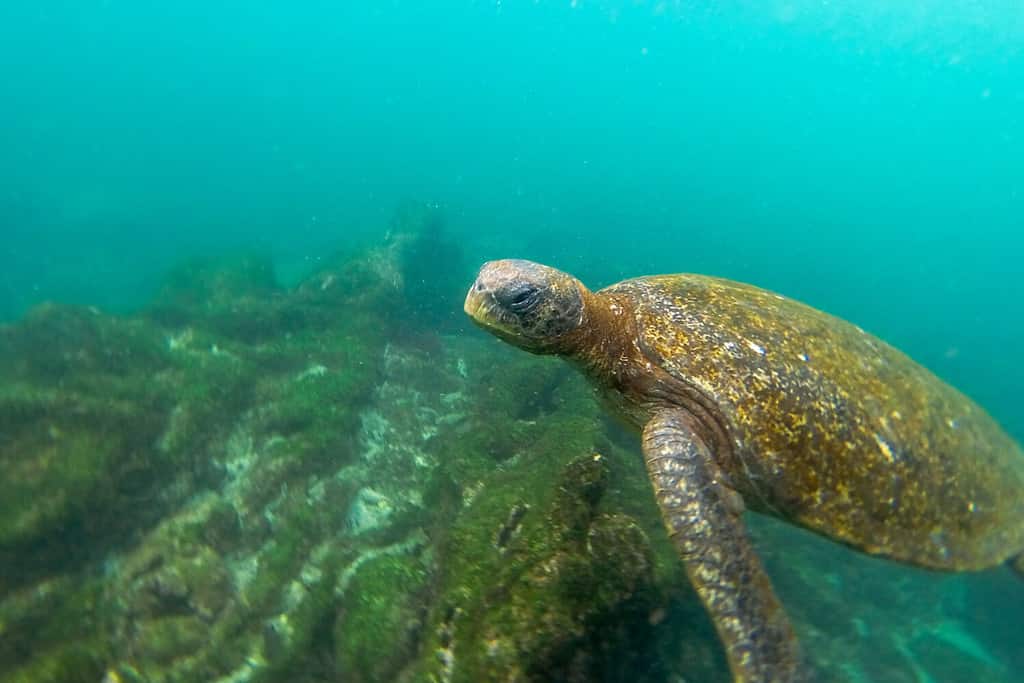
Some sea turtles cannot reproduce until they are 30 years old!
©Structured Vision/Shutterstock.com
The mating process for turtles begins with courtship, a crucial process that facilitates successful mating. Male turtles use various strategies to woo females, ranging from nuzzling their potential partners to displaying aggressive behavior.
Once the female is receptive, the actual mating takes place in water for many turtle species. Because mating requires the two turtles to entwine tails, cooperation is required. The male climbs onto the female’s shell and holds on to her with his claws. This process can last anywhere from a few minutes to several hours.
Interestingly, different turtle species have unique mating rituals. For instance, male green sea turtles often compete for a female by attempting to dislodge rival males from her back during mating. On the other hand, male box turtles perform a visual display, shaking their brightly colored heads in front of females.
Turtle Reproductive Cycle
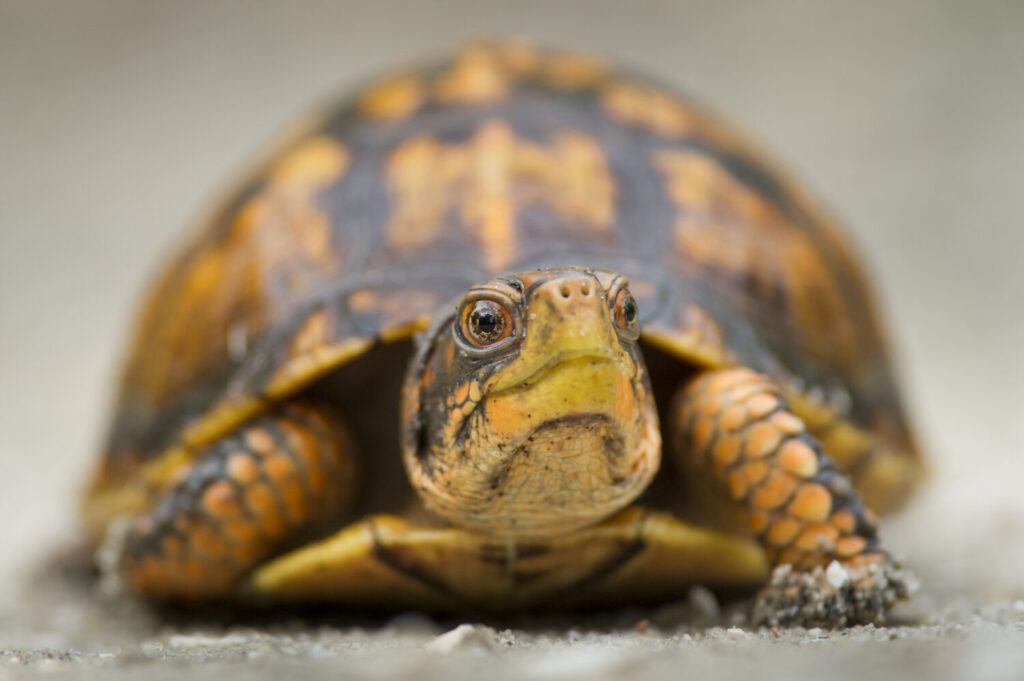
Certain types of turtles lay 2 eggs, and others lay hundreds.
©Ray Hennessy/Shutterstock.com
Turtle reproduction is cyclical and varies among species. For some turtles, mating occurs only once a year during a specific season, while others may mate multiple times throughout the year.
Some turtles can mate when they are only a few years, and some are sexually mature much later. For example, false map turtles mate when they are two or three years old. Common snapping turtles mate when they are 10-12 years old. Mexican tortoises are not fully ready to mate until they are older than 14! Some species of sea turtle, like Chelonia mydas, take between 24-28 years to grow large enough to mate, especially if food is not readily available.
After successful mating, the female turtle carries fertilized eggs within her for weeks or even months before laying them in a carefully prepared nest. Some turtles, like the leatherback sea turtle, can retain sperm from one mating session and use it to fertilize eggs over multiple nesting events.
The Egg-Laying Process

Some turtles lay eggs with soft shells. Some turtles lay eggs with brittle shells.
©Attila N/Shutterstock.com
The egg-laying process is an arduous task for female turtles. They first identify an appropriate nesting site. This is usually a sandy beach or soft soil. Then they use their hind flippers to dig a flask-shaped hole.
The female turtle will use alternate scooping movements of her hind limbs to dig a nest. With each scoop, she will twist her foot and drop the soil outside. She repeats this pattern until the nest is deep enough for her to reach with her outstretched hind limbs. Once she completes the egg nest, the female will brace her hind limbs and tail over the hole before dropping her eggs inside. After laying all the eggs, she will fill the nest with soil before leaving.
Their clutch of eggs can number from a few to over a hundred, depending on the species. The prolific olive ridley sea turtle often lays around 100-110 eggs per clutch! This large number helps ensure that at least some offspring survive to adulthood, given the high predation rate. Pancake tortoises and Asian black march turtles only lay two or three eggs. Hawksbill sea turtles lay around 150 eggs per clutch. Aldabran tortoises, common snapping turtles, and Suwanee cooters lay between 12 and 20 eggs.
Incubation and Hatching
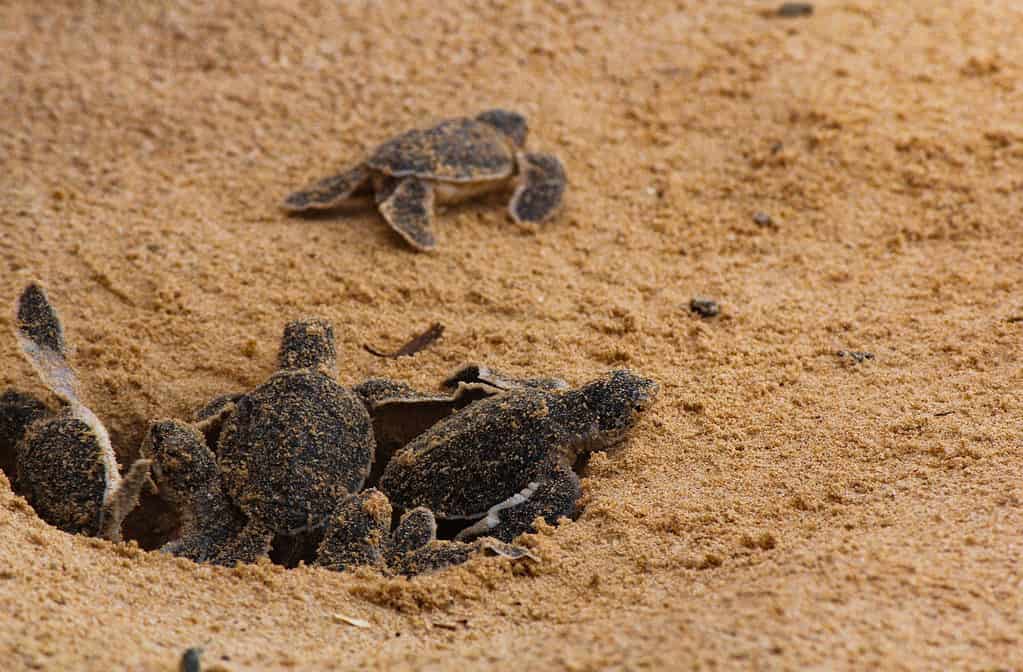
When baby turtles first emerge from the nest, they are in great danger.
©SLSK Photography/Shutterstock.com
Temperature heavily influences egg incubation. It not only affects development speed but also determines the sex of hatchlings in turtles. This is a phenomenon known as Temperature-Dependent Sex Determination (TSD). Warmer temperatures typically produce more females, while cooler temperatures result in more males.
The incubation period varies among species but generally lasts between 45-90 days. Once ready, hatchlings break out of their shells using a special temporary tooth known as a “caruncle.” The hatchling pushes against the inner surface of the shell to break it and then tears a larger opening to climb out. Sea turtles typically need to collaborate in order to make their way out of the nest, as a single hatchling may not have enough energy or time to make the effort alone. Once they have reached the surface, water turtles will move toward the water, and land turtles will find cover in vegetation to avoid predators. Unfortunately, eggs and hatchlings are very vulnerable and become food for many different predators in their habitats.
About Turtle Eggs
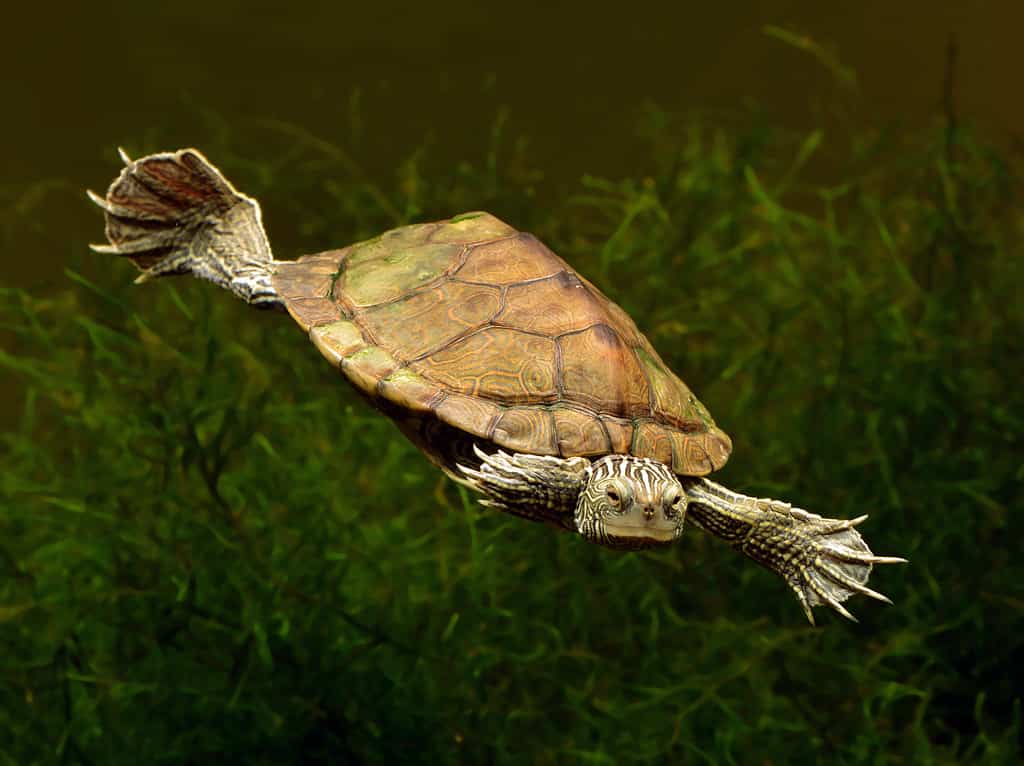
Some turtles live in freshwater, and others live in the salty sea.
©damann/Shutterstock.com
In the fascinating world of turtle reproduction, the timing and frequency of egg-laying vary among different species. While most turtles lay their eggs annually, there are a few exceptions to this pattern. Some species opt for a biennial approach, with females only nesting every other year. On the other hand, certain turtles exhibit an impressive reproductive strategy by laying eggs twice within a single nesting season.
When it comes to sea turtles specifically, they follow a distinct cycle that spans three to four years. During each nesting season within this timeframe, female sea turtles typically lay multiple clutches of eggs. To ensure sufficient time for rest and recovery between these energy-demanding excursions ashore, cycles of egg-laying occur approximately two weeks apart.
The composition of turtle eggshells is another intriguing aspect worth exploring. Sea turtle eggshells can be described as leathery in texture, while many tortoises have shells that are more brittle in nature. However, both types share an important component: calcium carbonate. This vital compound contributes to the overall structure and strength of the shell. However, leathery shells contain less calcium carbonate compared to their brittle counterparts.
Threats to Turtle Reproduction
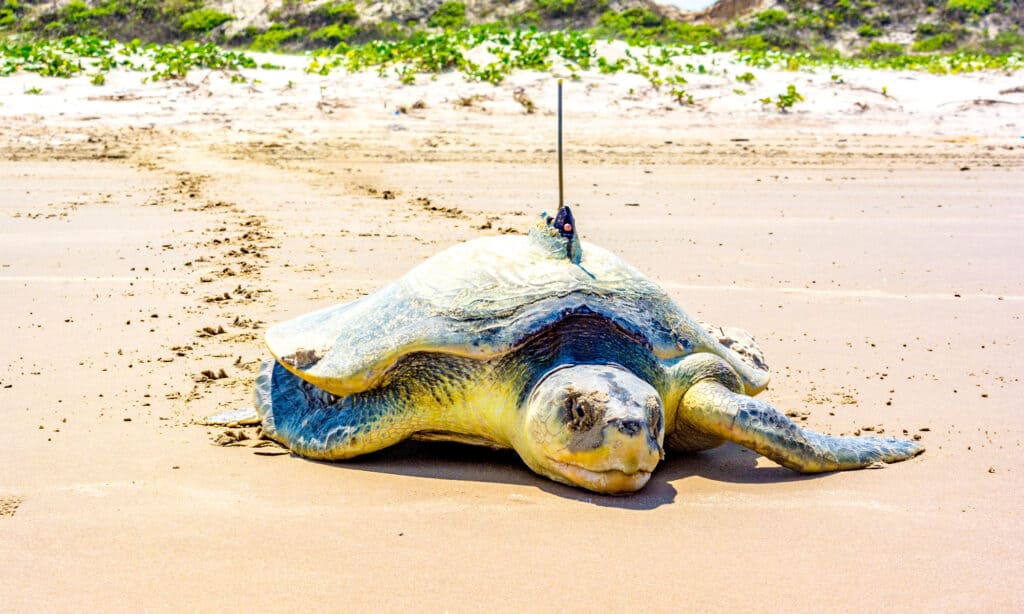
Plenty of turtles are endangered species. The biggest threat to their survival is humans.
©JB Manning/Shutterstock.com
Turtle reproduction is currently under grave threat due to a multitude of human activities and natural factors. Coastal development, in particular, poses a significant danger as it disturbs and destroys the nesting sites that turtles rely on for their reproductive cycle. The alarming rise in pollution further compounds the issue by negatively impacting these vital habitats.
Tragically, hunting and egg collection have emerged as major contributors to the decline in turtle populations worldwide. These destructive practices not only disrupt the delicate balance of turtle ecosystems but also inflict irreparable damage on their ability to reproduce successfully. As a result, turtle numbers continue to dwindle at an alarming rate.
In addition, light pollution has emerged as another concerning factor affecting turtle reproduction. Artificial lights can disorient newly hatched turtles, leading them away from their instinctual path toward the safety of the sea. This misguided journey exposes them to various dangers and drastically reduces their chances of survival.
Furthermore, natural predators such as birds, crabs, and raccoons pose significant risks throughout all stages of the turtle’s reproductive cycle. These opportunistic creatures eagerly prey upon both eggs and hatchlings alike without any regard for conservation efforts or future generations of turtles.
To exacerbate matters even further, climate change serves as a compounding force that intensifies existing challenges faced by turtle reproduction. Rising global temperatures disrupt incubation processes by altering crucial temperature conditions within nests—an essential factor determining gender ratios among turtles. This leads to potential imbalances within populations over time.
Conservation Efforts

Turtles face many challenges when it comes to surviving on planet Earth.
©Juice Verve/Shutterstock.com
Despite these challenges, numerous conservation efforts are underway to protect turtle reproduction. These include establishing protected areas for nesting sites, conducting research to better understand turtles’ reproductive needs and strategies, and promoting community-based conservation initiatives.
And you can help too! Supporting local turtle conservation organizations or participating in beach clean-ups can make a significant difference. Even small actions like reducing plastic usage and being mindful of light pollution can contribute towards safeguarding these remarkable creatures’ natural breeding cycles.
In conclusion, turtle reproduction is a complex process interwoven with unique behaviors and environmental interactions. Understanding it not only deepens our appreciation for these resilient reptiles but also underscores the urgent need for conservation efforts to ensure their continued survival.
The photo featured at the top of this post is © fivespots/Shutterstock.com
Thank you for reading! Have some feedback for us? Contact the AZ Animals editorial team.






